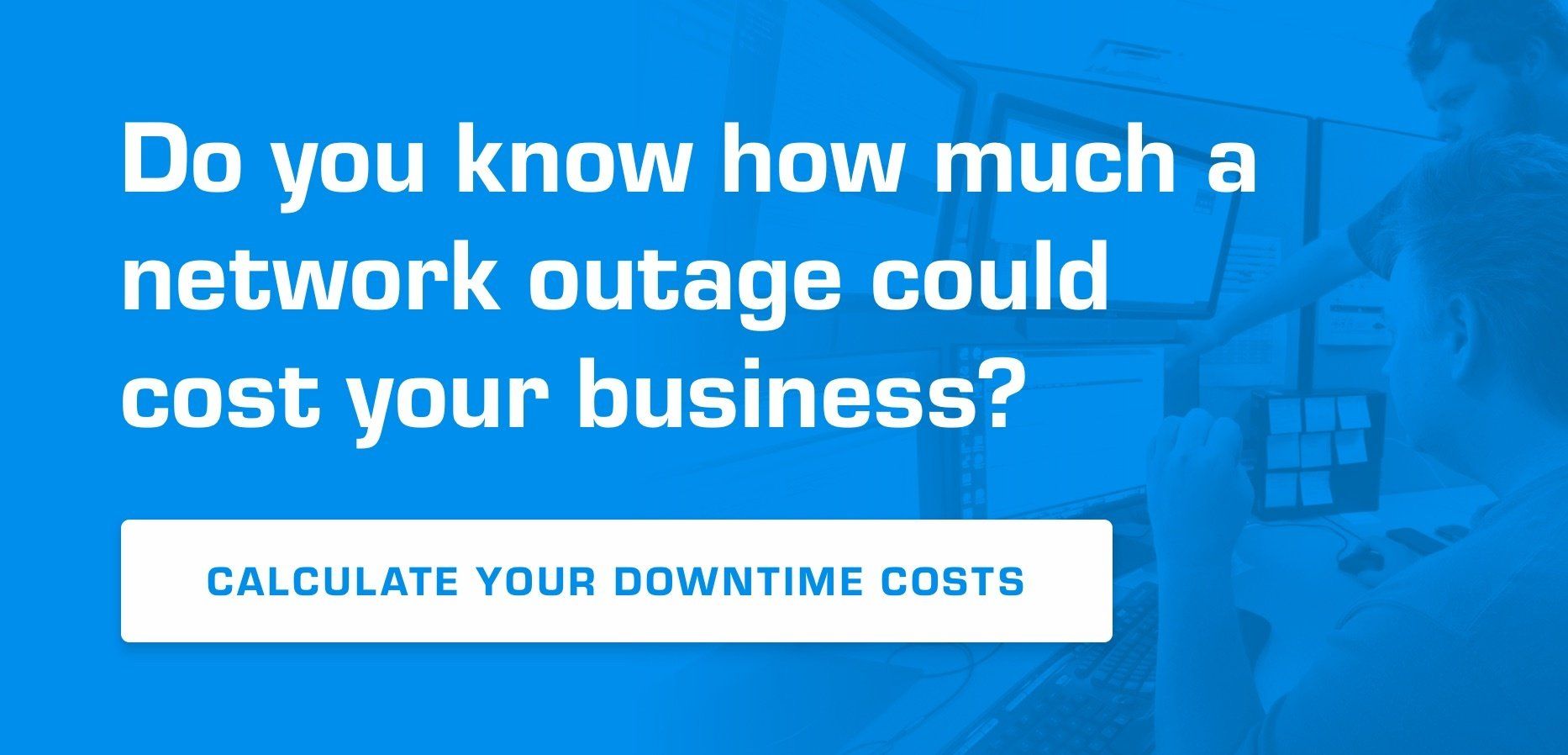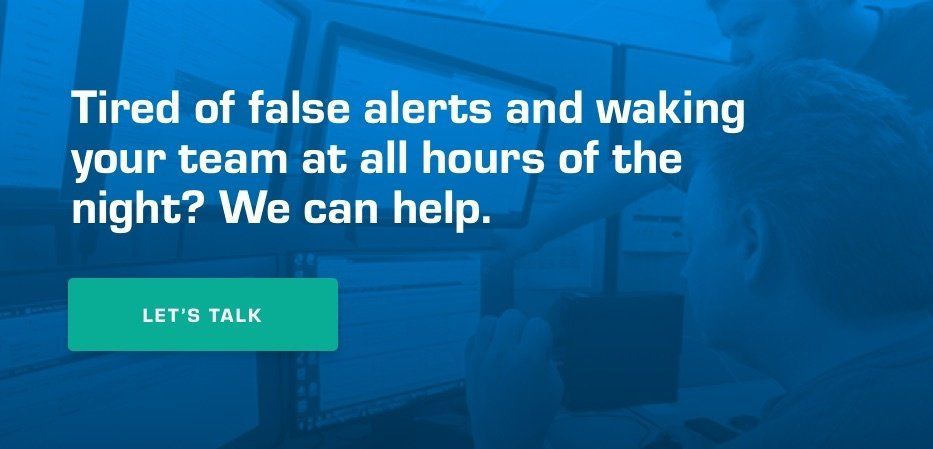The Top 5 Infrastructure Monitoring Challenges of Growing Organizations
Monitoring and ensuring network performance has easily become a full-time effort for organizations everywhere. Growing enterprises—especially those on a fast-track growth curve—have the additional task of finding monitoring solutions that can scale with that growth, and accommodate new platforms and challenges like the cloud or work-from-home requirements.
This article takes a look at five of the top issues that keep IT departments up at night as they try to watch over far-flung users, applications, cloud services , and on-premise hardware infrastructure.
Unique Monitoring Challenges Facing Enterprise Organizations
High Availability and Scalability
As new hardware, software, platforms and services are added to the network , your legacy set of monitoring tools, that served you so well last year, may no longer be sufficient to prevent downtime and performance issues. The functionality of those legacy monitoring tools often doesn’t provide insight into the newest platforms and systems.
Case in point: Today’s enterprise networks often have to support not only data but also latency-intolerant voice, phone, and video (Zoom anyone?) As a result, IT departments need to adjust their IT Service Management (ITSM) functions to accommodate a growing multitude of critical applications .
That adjustment requires monitoring tools that, ideally, offer a “single pane of glass” into the entire network and its parts. Without such tools, and left without a cohesive strategy, IT teams tend to develop their own competing, independent platforms to monitor the specific network elements for which they’re responsible. Such piecemeal approaches to network performance monitoring are inefficient and can sometimes introduce security concerns into the network. They also often don’t scale, and cannot assure the high availability users expect. Overall performance begins to suffer.
Partnering with an outsourced NOC gives you the scalability and high availability you need as your network grows. A NOC partner will stay on top of alerts to minimize false positives, and create a more stable and reliable network overall.
Geographic Distribution
Enterprises with offices spread across the nation and/or the world face another problem. Their servers, network devices, IoT devices, appliances, and personnel are spread out over vast geographies and time zones. They often connect to a variety of disparate cloud services as well. It’s not uncommon for headquarters to give remote teams the authority to manage their own local network segments, further complicating the network management landscape.
Having potentially dozens of independent monitoring teams (made worse if multiple monitoring tools are in use) makes it extremely difficult to correlate data that’s meaningful to the enterprise as a whole. What may be acceptable network performance to the team in Chicago, may be wholly unacceptable to the team in London that relies on databases hosted in Chicago.
Further, as various teams solve problems in their respective areas, their experience and knowledge may not be shared with other teams. One team chasing down a common problem may have to discover on their own the solution another team has already found.
The costs of downtime incurred trying to solve the problem, performance bottlenecks, and duplicated effort are all avoidable when an outsourced NOC partner is engaged. A NOC partner can collect and retain data in a centralized location in case there’s an interruption in network connectivity anywhere in the organization. Knowledge can be shared, downtime and duplicated effort can be avoided, and more strategic IT decisions can be made.
The Problem with Performance Monitoring Portals
IT monitoring tools all strive to give you a single view into your network. Some do, but many do not. Unless you have skilled, dedicated staff deploying these tools however, you’ll likely wind up with a lot of false-positive or “nuisance” alarms. Monitoring complex systems properly requires a specific skillset which many IT techs simply don’t have.
With thousands of systems and devices on the network, it can happen that the whole screen “turns red” with alerts. And teams faced with so many alerts can struggle to identify the root cause of performance problems and the impact they have on users.
They need more specific information and a way to prioritize the problems. Without that, the monitoring team (or management) may declare that all the alerts have equal priority. Such a decision can paralyze the efforts to resolve those issues that are truly the most serious.
A NOC partner can tailor alerts, set classes of service, implement checks and balances (aka sanity checks), and customize a monitoring portal to make team members more productive, focusing on just those systems and metrics of the critical systems they manage. This eliminates the “red screen” and lets the IT department restore the network to its proper level of performance quickly.
Customization: The Multiple Tools Problem
IT departments often look for monitoring tools that give them the ability to watch over specific aspects of network health and performance. However, that approach can lead to the use of multiple tools when new services or infrastructure are added. It is also very common for multiple teams to implement their own tools, each needing yet another “special case” monitoring tool for the task at hand. When an outage occurs, you’ll see a lot of “swivel chair” activity, where technicians consult one tool for the network elements, another for the servers and yet another for the applications. It’s painful but common.
The drive to cover every aspect of network operations can spawn a dizzying array of monitoring tools—each requiring their own unique logins and each presenting their findings in different formats. As the IT department moves to new systems, products and services, the wheel is reinvented over and over which is inefficient and expensive.
Multiple tools can also result in numerous false positive alerts, ultimately leading to "alert burnout" and apathy on the part of your personnel. An outsourced NOC solution, administered by experts, can be customized to meet the needs of a growing enterprise so that the entire network can be monitored in a consolidated fashion, and can adjust as new technology, devices, and services are added.
The Reporting Problem
Enterprise organizations, especially those in a high-growth market, need advanced reporting capabilities to provide a broader and deeper view into network performance. KPIs and metrics that form the basis for SLAs need to be tracked on a regular basis to expose trends and allow analysis that provides a true understanding of their network’s health, performance and growth over time.
A NOC partner can report on such trends and provide the analysis that gives you a true understanding of your complete enterprise network, no matter how large and geographically diverse it may be.
iGLASS monitoring solutions are developed with the specialized requirements of our clients in mind. Contact us to see how we can provide a flexible and scalable IT performance monitoring solution that addresses all the issues your growing organization faces.





This is a paragraph. Writing in paragraphs lets visitors find what they are looking for quickly and easily.
This is a paragraph. Writing in paragraphs lets visitors find what they are looking for quickly and easily.
All Rights Reserved | iGLASS Networks







